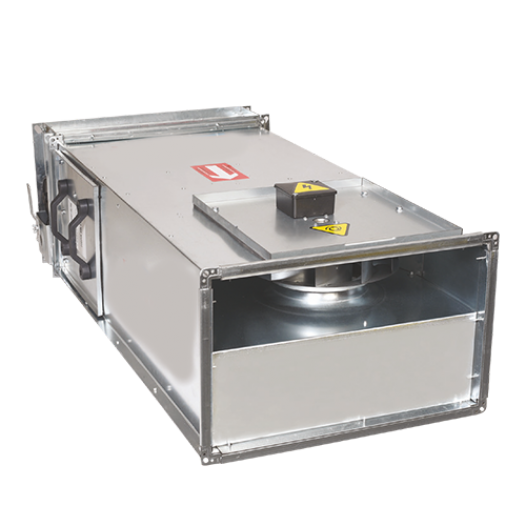Duct type fans, known as an indispensable component of ventilation systems, are designed to ensure proper air distribution within these systems. Thanks to their energy efficiency and versatile application features, these fans attract significant attention and are frequently preferred to provide comfortable air distribution. At this point, the ease of use and low maintenance requirements of duct type fans stand out as key factors contributing to their popularity across a wide range of applications.

The working principle of duct type fans differs from other fans. Their mechanism is based on increasing static pressure, which enables air to move steadily along the ducts. Especially in industrial areas and commercial buildings, duct type fans provide effective and efficient solutions, while also drawing attention with their various types.
In addition to their types and features, the advantages they offer make duct type fans widely preferred in many fields. Among the most well-known benefits are efficiency, energy savings, and quiet operation, which provide significant value to users. In short, duct type fans play a highly important role in ventilation systems. However, there are several factors that need to be considered when choosing these fans.
Here are the key points to consider when selecting a duct type fan:
Duct type fans are ventilation systems mounted onto air ducts, used to move air across various environments, and have become increasingly popular in recent years. Generally preferred in ventilation systems, duct type fans offer numerous advantages such as quiet operation, energy efficiency, compact design, and easy installation. With different size and power options, they can be customized to meet diverse needs, making them suitable for a wide range of applications.
The selection of these fans should be made by considering specific factors. Otherwise, the expected results cannot be achieved. Therefore, the first step in choosing a duct type fan is conducting a needs analysis. It is essential to determine where, for what purpose, and under which conditions the fan will be used. Calculating the air flow rate is also crucial at this stage, as the fan must be capable of moving the required amount of air. After that, pressure loss calculations should be made, ensuring the chosen fan is powerful enough to compensate for the loss. Choosing the correct type of fan based on air flow requirements is another important factor that leads to more efficient results.
In addition, noise level is a significant consideration, especially in residential areas where decibel levels are limited. For this reason, quieter fan models should be preferred, and duct type fans provide great benefits in this regard. Other factors such as size and installation, energy efficiency, motor type, and compliance with standards also offer users considerable advantages and convenience during the selection process.
Selecting the right fan according to usage areas is extremely important for both comfort and system efficiency. Failing to consider the application area when choosing a fan not only prevents efficient results but can also lead to various problems. Therefore, taking the usage area into account during the selection process will be the most accurate approach. The key fan selection criteria that should be considered based on the area of use are as follows:
In addition to these, many other fan types can also be used effectively in large-scale areas, offering significant advantages that make them essential systems in a wide variety of applications today.
Airflow generally refers to the amount of air entering and leaving a given space. Beyond that, airflow is one of the most fundamental parameters for fan selection, ventilation capacity, and indoor air quality, representing the volume of air transported per unit of time. At this point, determining airflow correctly is highly important.
Airflow should be calculated based on the intended use, the number of occupants, sources of indoor pollutants, and the volume of the space in different areas and applications.
The calculated airflow plays a critical role in fan selection, determining device capacity, sizing duct diameters, and ensuring indoor air quality and safety, ultimately providing efficient air circulation in these areas.
Finding the right and efficient duct type fan solutions is a method that supports the ventilation needs of different spaces. At this point, choosing the right company and ensuring that the solutions offered by duct type fans are sufficient is extremely important. As Erf Group, we strive to provide accurate duct type fan solutions with our wide range of products, helping you achieve the most effective results in various applications.
If you would like to benefit from the duct type fan solutions offered by Erf Group and explore these options in more detail, you can visit our website right now. Get in touch with us to review the different types and solutions in duct type fans, and easily obtain the fan systems you need.